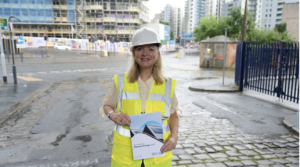Privatisation of play spaces a ‘crisis’ for future Londoners
 A think tank has called for action to prevent more play spaces from disappearing in a capital.
A think tank has called for action to prevent more play spaces from disappearing in a capital.
A collection of essays published by Centre for London raises concerns about the number of play spaces being lost to privatisation, and funding cuts.
According to the essays, 300,000 children in the capital won’t play outside today, and one in seven won’t visit a local green space in a given year.
The contributors highlight a number of policies which could help tackle the decline in play, including more investment in residential centres and youth clubs.
The journal cites the example of London Youth’s residential centres at Hindleap Warren and Woodrow High House, which provide children and young people with access to outdoor activities in private woodlands.
As outdoor play and fun is at the heart of activities to develop social and emotional capabilities, the report states it’s easier to encourage young people to develop their confidence, learn about communication and teamwork, and understand the natural environment if they’re having fun while doing it.
‘Young people get the opportunity to get covered in mud, to orienteer on their own, and to hear stories about mythical creatures and ghosts as they explore what they perceive to be unchartered woodland territory,’ the report says.
‘A sample of nearly 900 young people who visited London Youth’s Hindleap Warren residential centre, either with their school or their community youth organisation, showed that over two-thirds had improved self-confidence and were better able to manage their emotions at the end of their visit.
‘More than 50 per cent reported feeling more motivated, confident, and competent in social situations.’
Another long-running example of community-led activities welcoming and supporting young people is Laburnum Boat Club.
‘Everyone learns best through play, no matter what their age,’ said the club’s deputy co-ordinator, Ben Ettinger.
‘That can range from silly play to structured, developmental play. In this kind of environment you can support young people’s social development: young people let their guard down and build relationships much more quickly because activities aren’t viewed as authoritarian. They come back because they want to and, once you’ve got this engagement, you can focus on their social development, or training, or schoolwork, or whatever it is. It provides a stepping stone.’
The essays also call for more play free opportunities to be funded across London and more spaces to encourage inter-generational play.
They recommend that the mayor of London appoint a young mayor to approach planning through the eyes of children.
The director of Centre for London, Ben Rogers, said the decline of children’s play opportunities in the capital is a ‘crisis for future Londoners’.
‘We should not just be worried about the disappearance of play for children,’ said Mr Rogers. ‘People are drawn to London, not just to work, but also to play – which forms an important part of the London economy.
‘As the mayor consults on his London Plan, we must make sure that the capital retains and enhances its character as a global and local playground.’
- Read the essays here.















